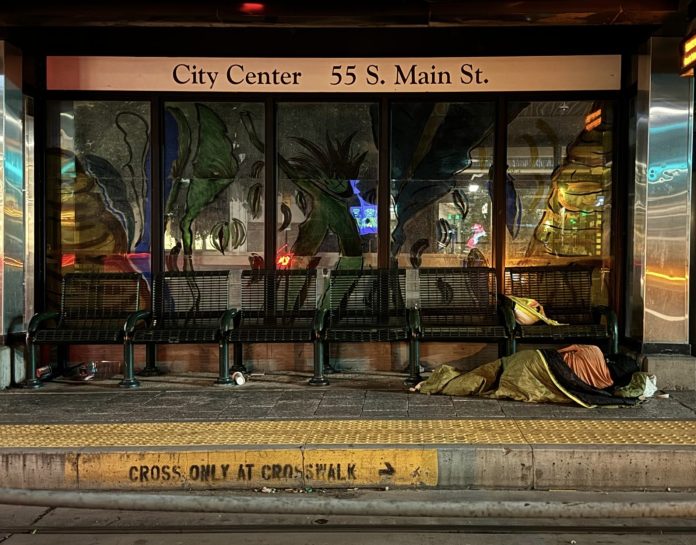SALT LAKE CITY, Utah, Aug. 17, 2024 (Gephardt Daily) – A new report by the Utah Office of Homeless Services is shedding new light on the state’s unrelenting homeless crisis.
According to the comprehensive report, homelessness rose by 9% in 2023, meaning a total of 9,838 Utahns found themselves on the streets, in shelters, or other provisional housing in 2023 for the very first time, 794 more than the year before.
Four percent of that population had experienced multiple days of homelessness, the report said. There was also a 4% increase in individuals accessing emergency shelter and transitional housing in 2023 compared to 2022.
Other insights garnered from the data analysis reveal 11 out of every 10,000 Utahns were homeless in 2023. While Utah’s numbers were significantly better than the national average of 20 homeless per 10,000 people, the report found 273,052 Utahns were living below the poverty line. That is 8.2% of the state’s population and a sobering number when you consider Salt Lake City’s total population was 204,657 in the 2020 census.
“The data in the new report demonstrates the significant ongoing need for shelter and housing resources with supportive services,” said Tricia Davis, director of the Office of Homeless Services. “Effective strategies must address the root causes of homelessness to promote long-term stability for individuals and families at risk of, or experiencing homelessness.”

Some of those sorely needed resources and services were addressed by the Utah Legislature, which passed a $51 million spending bill in the 2024 legislative session to help the homeless. While it was $135 million short of the $186 million Gov. Spencer J. Cox had requested prior to the session, the incremental relief is greatly welcomed by the UOHS.
“Thanks to the nearly $51 million investment from the Utah Legislature, their support for critical initiatives led by the Office of Homeless Services will have a significant impact,” said Wayne Niederhauser, State of Utah Homelessness coordinator. “Enhanced data capabilities, prevention strategies, statewide service support, immediate crisis response, and expanded winter services are essential steps toward stability and independence for those experiencing homelessness.”
The UOHS says it “aims to achieve a comprehensive approach to reducing homelessness, with the ultimate goal of making homelessness in Utah rare, brief, and non-recurring,” and that prevention strategies are an essential part of that plan.

“Ongoing supportive services play a crucial role in assisting individuals and families as they transition out of homelessness,” the report says, including “housing assistance, job training, transitional housing, case management, financial counseling, and connections to long-term housing solutions.
“By addressing the multifaceted needs of those exiting homelessness, communities can ensure a more sustainable and successful path towards stable housing and long-term independence. The permanent housing projects with supportive services are highly effective in keeping the most vulnerable in housing.”
Other findings highlighted in the UOHS reporting include:
- 80% of individuals engaging with our emergency shelter system in 2023 spent 90 days or less in shelter, consistent with 2022.
- The percentage of individuals staying 12 months or more remained at 2%.
- 93% of people housed by long-term housing projects maintained their housing or obtained permanent housing outside the project.

The annual UOHS dashboard is available at: https://jobs.utah.gov/homelessness/homelessannualdata.html






